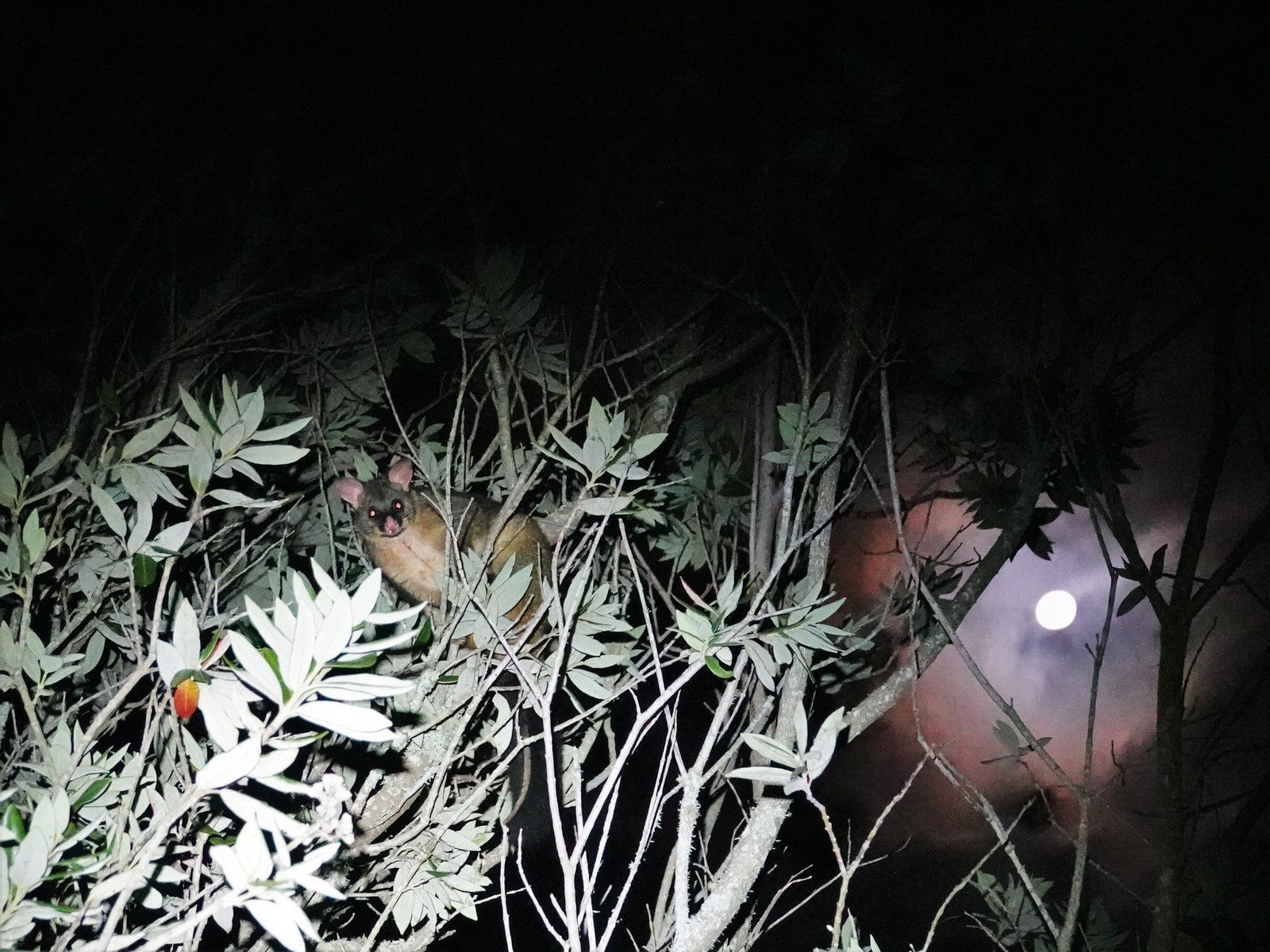Possum facts
Possums are a major threat to native wildlife and plants.
Possums were first brought to New Zealand by early settlers to establish a fur trade. Early attempts failed until 1858 when the first possum population survived in Southland.
Over the next 90 years, there was ongoing debate about whether possums were a problem. Farmers and orchard owners were frustrated by the animals destroying their plants, but those in the fur trade saw possum trapping as a valuable income source. In 1911, the government allowed the hunting of possums because of the damage done to crops and orchards, but they were still protected in native forest areas.
Throughout the 1920s, conservationists became concerned about the impact possums were having on native forests. In 1922, the government made it illegal to bring possums into New Zealand, but they continued to be protected in forests.
Finally, in the 1940’s, the first scientific evidence of the damage caused to native forest by possums was presented. The government’s attitude changed quickly and possums were officially declared a pest in 1946. By 1950, they were present across half of New Zealand and were still spreading.
The possum population in New Zealand peaked in the 1980s when between 50 and 70 million of them were found across New Zealand.
Why are possums a problem?
It’s well known that possums eat native plants, but their cumulative effect on our native forest ecosystems is both subtle and sinister.
Possums eat the leaves, flowers and fruit of native plants. Their preferred trees are fuchsia, māhoe, rātā, and kāmahi. However, it is not just what possums eat, but how they eat, that is so damaging.
Possum eating kiekie. Photo by Ngā Manu.
Possums return to the same tree night after night, stripping and killing it, before moving on to another. This makes it impossible for the affected tree to flower, fruit, and regenerate. As more and more trees get stripped, the entire forest canopy collapses.
It’s not just native forests that are under attack. Possums also eat the eggs and chicks of native birds, along with invertebrates like wētā and snails. They also compete with native wildlife by eating the same food sources and aggressively occupying nest sites that would otherwise be used by certain species of native bird.
Possum eating a kererū egg. Photo by Ngā Manu.
Possums also carry bovine tuberculosis (TB) which can infect livestock such as cattle and deer. The disease was found in Dunedin in 2015, leading OSPRI to start a possum control programme in the area to get rid of it. This is part of the TB Free programme which aims to eradicate the disease from New Zealand by 2040.
Description
Possums have two colour phases in New Zealand — black and grey. Adult male blacks vary in colour from rich red-brown to dark brown. Females have darker black-brown fur. Adult male greys are red in the neck and shoulders, often with a silver tinge in their fur.
Habitat
The main habitat for possums is forest, though their numbers can get high in podocarp-broadleaf forests. They also frequent forest margins where the forest meets pasture or people’s backyards. They will visit people's backyards, especially to feed on vegetable gardens, fruit trees, and flower gardens.
Photo by jacqui-nz (CC-BY)
Biology
Possums start reproducing at between 1 and 2 years of age. Females will raise a single joey each year, but may have another in the spring if enough food is available. Breeding starts in late March and goes until early May. The gestation period for a joey is 17 to 19 days. It crawls into the mother’s pouch where it stays for five months before becoming a “back rider”. The joey is weaned at about 6 - 8 months though some will stay with the mother until it is 1 year old.
Got possums?
Possums leave obvious clued they have been visiting your backyard or garden.
Possum drive-through
Possums follow a regular route to its favourite food source. You may notice narrow tracks of flattened grass leading from one piece of bush to another in your garden. This is a great place to put your trap!
Damaged trees
Possums like to mark their favourite trees by scratching or biting tree trunks. You can also look for gnawed leaves and buds on plants and trees.
Possum poo
Possum droppings are often found below areas where they have been resting. Keep an eye out for jellybean shaped pellets with slightly pointed ends. They are about 3 centimeters in length and may be single or in clumps. The colour of possum poo changes based on the animal’s diet. For example, if a possum has been eating pine pollen, it may be yellow!





